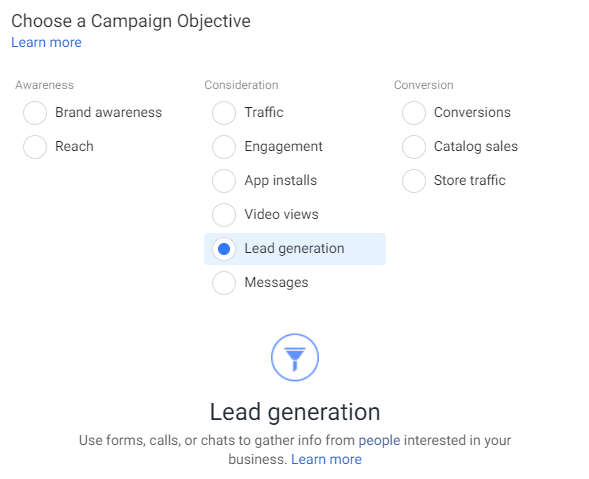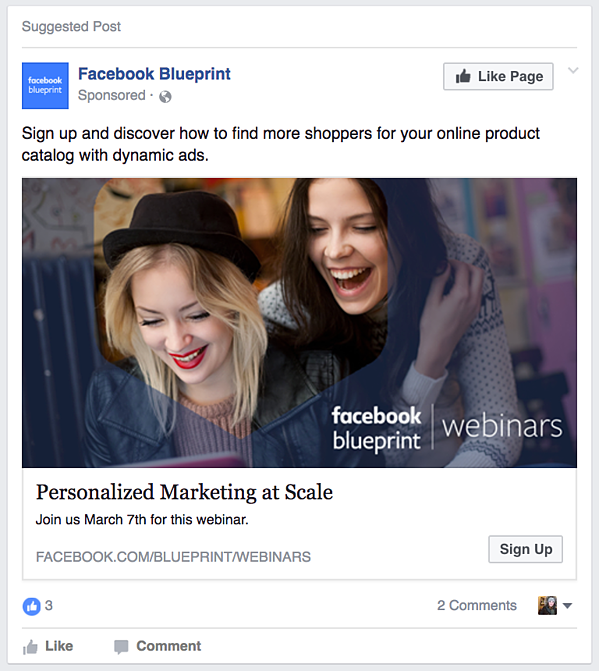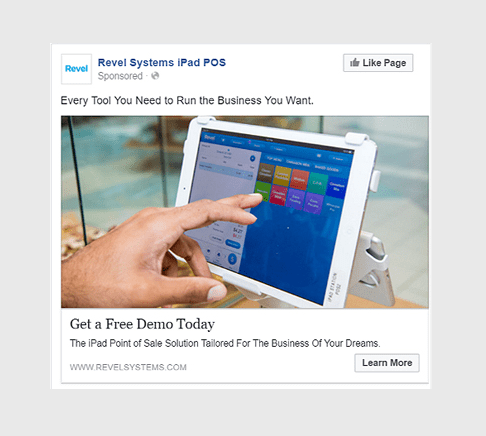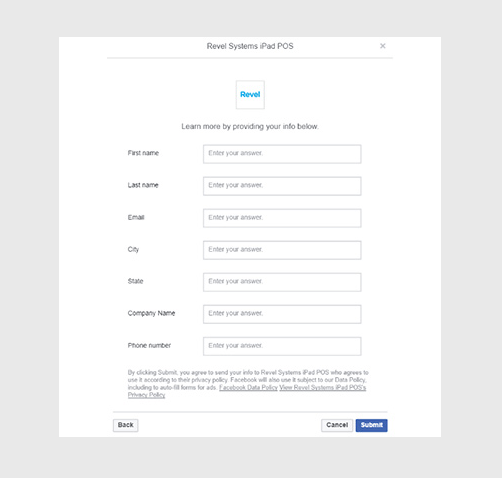First off: What even are Facebook lead ads?
Lead ads are an ad type specifically aimed towards finding users likely to be interested in your business. They’re available by using the lead generation campaign objective.
When these users click on your ad, they’re directed to a pre-setup form that allows you to gather information about them. This form often includes some variation on name, email address, and maybe phone number and/or a few other spaces of information for the user to submit to you.
Once a form is submitted, you can download its contents to have on hand. Now you’ve got a lead with contact information for future reference — and it was provided to you directly by that person, indicating a certain level of interest and trust.
More on the lead generation campaign objective
When starting an ad campaign on Facebook, you must select a campaign objective. Different campaign objectives will result in different automated optimization steps; we discussed these in a previous blog post about Facebook advertising here.
As the name suggests, selecting the lead generation objective sets your campaign up to discover new potential customers. It’s also the only objective option through which you can add forms to your ads.
Screenshot of available campaign objectives to select from on Facebook.
Why use lead ads?
The things that lead ads are well-suited for tend to be foundation-laying for your e-commerce site or other business. This includes identifying interested users as potential customers and collecting information from those who want to subscribe to a newsletter, for example. Similarly, they’re also good for introducing interested users to download a brochure or informational piece you might offer, or for having them enroll in a program of yours.
In general, lead ads help you understand more about potential customers, including their interests and behaviors.
Lead ads also have native functionality, allowing people to fill out a form of yours within the Facebook platform. They’re also responsive to mobile and allow you to efficiently target your segments.
Within a lead form ad, you can also have prefilled questions. These automatically use information from the user’s Facebook (or Instagram) and fill it into your form. This is available for many pieces of information, including:
- Name
- Phone number
- Country
- Address, city, and state or province
- Birthday
- Gender
- Relationship or marital status
- Company
Screenshot of Lead Gen Form ad on Facebook; source: source: blog.hootsuite.com
Screenshot of Lead Gen Form ad on Facebook; source: blog.hootsuite.com
General lead ad best practices
Just like everything, there’s some practices to follow that’ll provide a solid baseline, both for a lead form and the ad itself.
For the ad, this includes (like all ads) having engaging imagery or video and a strong call to action. This can be especially effective if you include an incentive alongside it too.
Screenshot of Facebook Lead Gen form ad; source blog.hootsuite.com
Screenshot of Facebook Lead Gen form ad; source blog.hootsuite.com
As far as targeting, you’ll tend to have disproportionate success showing your ads to lookalike audiences, which are those users who have a similar profile to your best customers in the past. Then, when you get people engaging with your lead ad, you can use that for remarketing to those users.
For the lead form itself, we recommend starting it off with an intro section to engage new users, and from there keeping it simple.
Where applicable, give users multiple choice questions, which better qualify your leads. On the flip side, limit the number of short answer questions; while they can be quite valuable in certain instances, they’re difficult to analyze on a large scale.
Lastly for questions, take advantage of the prefill option. And over a longer period of time, test out different instant form lengths — longer ones will get you more information of course, but shorter ones will typically have more people complete them. There will be a happy medium that you’ll be over to figure out over time.
Lead ads can be quite valuable. After you use them for a while, you’ll find out which practices work best specifically for your business. These tips will provide a baseline from which to start!









